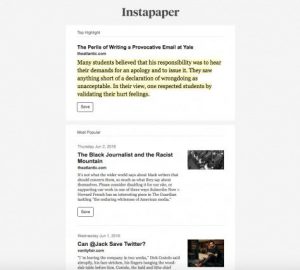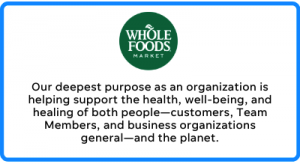What does it mean to have “optimized content,” and what’s the secret to achieving it? Columnist Neil Patel lays it out.

When people talk about “optimizing content,” they’re usually thinking of it as a technical task that requires “SEO best practices” and “relevant keywords.”
In today’s content-driven world of digital marketing, I see it differently. In my experience, there are other factors that are far more influential in optimizing content.
Optimizing content is less a matter of keyword presence and metadata and more an issue of trust, intent, quality, and authority. In this article, I will explain a six-step process that you can use as to create perfectly optimized content every time.
1. Build Trust
In May, 2014, the Moz Blog came out with an explosive article that boldly proclaimed: “Content Isn’t King. Trust Is King.”
You’ve probably heard so many riffs on the “content is king” line that you’re prepared to dismiss this as yet another variation on the same tune. But in spite of the hackneyed cliche, there’s a powerful truth to this statement: “Trust is king.”
Let’s keep in mind, of course, that “trust” doesn’t displace content — rather, you can only build trust through content. So, you’re still right if you say that “content is king” — as long as it’s trustworthy content.
Trust is the only way to get conversions and make sales. Here’s how you can build trust with your content.
Build trust by using the right words. Since content is comprised of words, it only makes sense that you have to use the right words in order to build trust.
Buffer’s “Big List of 189 Words That Convert” included the following transitional and explanatory words:
- Accordingly
- As a result
- Because
- Caused by
- Consequently
- Due to
- For this reason
- Since
- Therefore
- Thus
Jon Morrow’s list of 317 Power Words had a section of trust-building words. Here is his list:
- Anonymous
- Authentic
- Backed
- Best-selling
- Cancel Anytime
- Certified
- Endorsed
- Guaranteed
- Ironclad
- Lifetime
- Moneyback
- No Obligation
- No Questions Asked
- No Risk
- No Strings Attached
- Official
- Privacy
- Protected
- Proven
- Recession-proof
- Refund
- Research
- Results
- Secure
- Tested
- Try before You Buy
- Verify
- Unconditional
Words build trust. And these are the words that work.
Build trust by being objective. Objective content is written in such a way that it’s neither pushy nor salesy, but balanced and objective.
According to MarketingProfs, “Most consumers (74%) say they generally trust educational material from a business as long as it seems objective and doesn’t explicitly try to sell a product/service.”

That bit about trying “to sell a product/service” is a bit misleading. It is okay to try to sell your product or service, as long as the user’s intent aligns correctly. (More on that later.)
Everything depends upon intent. If a user has purchase intent, such as through a transactional query, then they are expecting to be sold a product or service. Not providing a call-to-action in this case can be frustrating.
Build trust by featuring user-generated content. A lot of customers will only trust your content if it is generated by other users. User-generated content (UGC) is a huge trust factor in content.
Get this. Here are the percentages of Gen Y customer who will not obtain major electronics, cars, hotels, travel accommodations, credit cards, or insurance without user-generated content.

UGC appears in different forms. One of those forms – testimonials – is particularly powerful. MarketingProfs discovered in a survey that nearly 60% of respondents would trust information from a company more if it included trust messages from “named sources.”

Amplify your content marketing efforts with UGC – reviews, forums, comments, feedback, case studies, social discussion, whatever it takes.
Build trust by sharing research, metrics and case studies. One of the greatest sources of trust is knowledge. We trust people who possess knowledge and wisdom: professors, authors, researchers, God, the government, millionaires, smart friends, or the Oracle at Delphi.
How do you assert your knowledge? You do so by producing facts – research, numbers, statistics, case studies, etc. If your content is well-researched and backed by data, people will trust it.
2. Match Intent
One of the keystones of content creation is to match the user’s intent.
Grant Simmons stirred up the SEO community when he wrote his “Keywords Are Dead!” article over at Search Engine Watch. The point he was making was not that keywords are actually dead and gone, but that there is something more basic we need to be driving at: user intent.
Here’s what he advised:
We live in an online world where users know what they’re looking for and search engines are getting much better at satisfying the user intent through their search results. But where does your brand fit into all this? Your brand’s website and online presence needs to align around targeted customer intent(s) not traditional keywords focused optimization….Focus [on]…aligned content creation.
How do you create content that matches a user’s intent? You do so by identifying the user’s query, and then creating content that matches it.
Here are the three types of queries, with examples from Moz.
- Navigational Queries: [alaska airlines]
- Informational Queries: [actor who played wash from firefly]
- Transactional Queries: [greek restaurant in flemington, nj]
Each of these queries indicates that the user is at a certain point in the sales funnel. If you can create the perfect content for that specific point, then you will be able to coax them further down the funnel.
Failing to match the user’s intent means that no matter how polished and compelling your content may be, it’s worthless.
Content should address the user’s intent. Users want what they want, and your content needs to deliver it or the user will be gone.
3. Create Quality
By now, you’re probably tired of hearing the advice to “create quality content.” Matt Cutts has been beating this drum ever since he appeared on the scene. Google never misses a chance to push the topic.
Well, tired as this advice may be, I’m here to insist on it again. Here’s a seven-step checklist to dominate the crucial elements of quality:
- Use proper grammar. Some grammar sticklers will be sure to point out any mistakes.
- Ensure correct spelling. Typos ruin trust and suggest that you are not thorough.
- Utilize formatting. Break up your content into scannable chunks. Use bullet points when appropriate.
- Keep content length appropriate. Not every article needs to be 2,000 words. Aim for a length that delivers the information and covers it thoroughly.
- Stay focused. Don’t wander off topic. Strive to stay on point with your content.
- Be readable. Keep your tone conversational and relaxed.
- Be clear. Make your points as forcefully and obviously as possible. Readers should not have to guess at your meaning.
Quality content matters. If you’re not producing quality content, you’ll disappoint your readers and lose their trust.
4. Establish Authority
Establishing authority is probably the toughest step on this whole list. Everyone wants to be considered authoritative, but achieving that is easier to talk about than it is to actually do.
One of the biggest obstacles to building authority is that it’s hard to define exactly what “authority” is. Most of us recognize an authoritative article when we read it, but we aren’t exactly clear on the specific features that characterize that content.
I hope to shed some light on this with the following three truths about authority. Understanding each of these truths will help you to create optimized content that is authoritative.
Establishing authority takes time. First of all, realize that building authority is a marathon pursuit. You don’t become authoritative after a couple of great articles. You might have to produce a couple hundred great articles.
You must deliberately craft an entire content marketing effort that is both deep and wide.
- Deep: Create detailed, in-depth articles.
- Wide: Guest blog on other high authority websites.
After time, you stature as a content creator will grow. Just be patient.
Establishing authority requires authoritative authors. In order to establish authority in your content, you have to be an authority figure in your field.
Do you know about your topic? If you’re writing about SEO, have you done SEO? If you’re writing about marketing, are you engaged in marketing?
If your audience is knowledgeable about the topic, they will be able to tell at a glance if your content is authoritative or not.
Establishing authority means citing authoritative sources. You don’t create an authoritative article simply by writing out your opinions. Creating authoritative content means citing other authorities, too.
Citing sources is standard practice in academic writing. The library guide at the University of California Berkeley states it like this:
Citations provide evidence for your arguments and add credibility to your work by demonstrating that you have sought out and considered a variety of resources.
You build your authority by referencing other authorities.
Griphon Marketing lists several sources for authoritative content:
- Census Data
- Medical Research
- Crime Data
- Consumer Surveys
- Interviews with Related Authorities
- Economic Data
As a content marketer, you should have an idea of the other websites or journals in your industry that provide authoritative content.
There are supplementary features that help to establish authority as well. Lots of social shares or comments, for example, can often serve as an indicator of an authoritative piece of content. But you can’t automatically rack up thousands of shares – this is a byproduct of authoritative content.
Work to create authoritative content, and the additional marks of authority will come.
5. Produce Calls-To-Action
The goal of all content is to take the user further down the funnel to conversion.
Perfectly optimized content is action-oriented. Every piece of content should help the user know what to do next. Optimized content is not an end in itself. Optimized content serves a greater purpose.
In order to create that greater purpose, you must invite users to convert. Here are some ways you can do that:
- Provide calls-to-action (CTAs) in the text of your content itself.
- Use a pop-up to encourage conversions.
- Position CTAs in your blog sidebar.
- Use a header CTA like HelloBar to solicit conversions.
Having optimized content means that you’re achieving your goal, and the only way to quantitatively achieve your goal is by gaining conversions.
6. Optimize Engagement With Visuals
Optimizing your content with visuals such as images and videos is extremely important for both engagement and purchase decisions. Did you know:
- Articles with images get 94% more total views.
- Press releases with a photo/video have 45% more views.
- 67% of consumers say the quality of a product image is “very important” in selecting and purchasing a product.
When you’re adding visuals to your content, ensure the following:
- Your images or videos are in context with your content.
- Your visuals add actual value to your content.
- Your visuals don’t slow down your loading time, while maintaining quality.
- Your images are optimized for search engines and social shares.
Use these optimization tips to fully optimize your images.
Conclusion
Remember “SEO writing?” It used to be a thing a few years ago. To get “optimized content,” you would hire a writer for $5/article and have them churn out articles with the proper “keyword density.”
That’s done. Optimization is entirely different today.
What about keywords? They’ll come, but no need to worry about it. What about H1s? Use them, but don’t stress out. What about length? Be relevant, but don’t panic.
Content optimization isn’t about any of these individual parts. It’s about a holistic content experience that focuses on the user.
Alan Bleiweiss, a forensic SEO audit consultant, knows about perfectly-optimized content. He’s taken thousands of sites from being totally unoptimized to being absolutely perfect. Along the way, he’s seen the big mistakes that ruin content. Here is what he identifies as the biggest mistake:
The number-one mistake I see people make in their efforts to optimize? They become fixated on individual signals — inbound links, keyword usage, crawl efficiency, content depth… or any of several other signals.They become myopic in what they work on rather than understanding the need to spread their energy/effort/resources around. The end result is an imbalance that creates an unhealthy pattern — too easily identified as “artificially forced” — that leaves them vulnerable to competitive efforts.
Don’t make that mistake. Create content with energy and passion, and the technical stuff will work itself out.
What techniques do you use for optimizing your content?
Marketing Land – Internet Marketing News, Strategies & Tips
(764)







